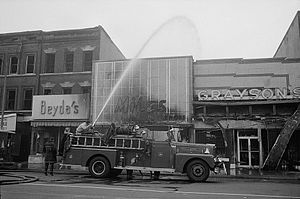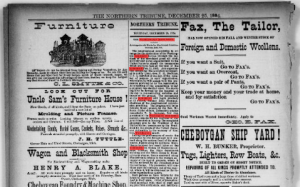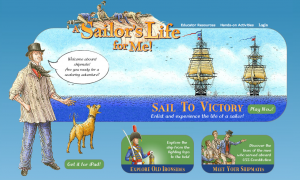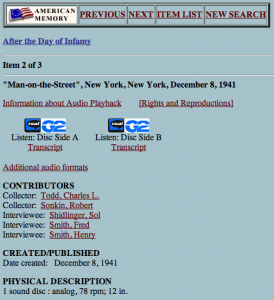The first research topic that I investigated in regards to the history of Washington DC is the 1968 string of race riots that exploded after the assassination of Martin Luther King Junior. This 4 day blip in the history of the Nation’s capital is so important because of how much it indicates about the racial inequality that plagued the United States for over a century after the Civil War. It brings about questions about the oppression of blacks in the US that are by no means limited to the degree of racism that many whites felt towards blacks during the 1960’s.
What was the nation’s reaction to this outburst of violence? Were these riots viewed as having a positive or negative long-term impact on the Civil Rights Movement in the United States? What sort of oppression or long-term injustice led to an atmosphere where an assassination states away could lead to such violence? All of these questions which could be researched in regards to the race riots in DC which is why I view it as such a rich and interesting topic.

The aftermath of a fire that burned during the riots in Washington DC, c. 1968
The second topic I investigated is actually tied in some ways to the aforementioned race riots that occurred in Washington DC during the 1960’s. The topic is urban renewal, a process that began in the early-mid 20th century in Washington DC, as well as in many other cities all across the USA. Urban renewal was an attempted revitalization that the US government imposed on low-income areas in American cities. Although it did lead to the creation of many new and improved urban environments, it came at the cost of relocating thousands of Americans in Washington DC especially. These people were largely minorities and were paid low amounts for their properties, and often were forced to leave their neighborhoods, never to return.
I would research this topic first by examining the purpose of the urban renewal process during this period in general, not just in DC but across the whole United States. Once I had a grasp of why the project was undertaken, I would start to look at maps, plans, and layouts for what regions were “renewed.” I would then ask myself whether this process seemed like a good or bad overall idea, based on if I feel it was aimed at moving lower-income residents, minorities, etc.
The third and final topic I look into as something I might want to research is the inauguration of President Barack Obama. I feel as if this event would be an interesting research topic just because of how demonstrative it is of how far Washington DC has come since the mid 20th century in terms of racial equality. I would preface my research on this topic with a look at DC’s history in regards to African Americans, especially events like the race riots and the urban renewal movement. These add context to the topic, and once that is added, I would look into what the inauguration meant to the nation in terms of its history of racism.



